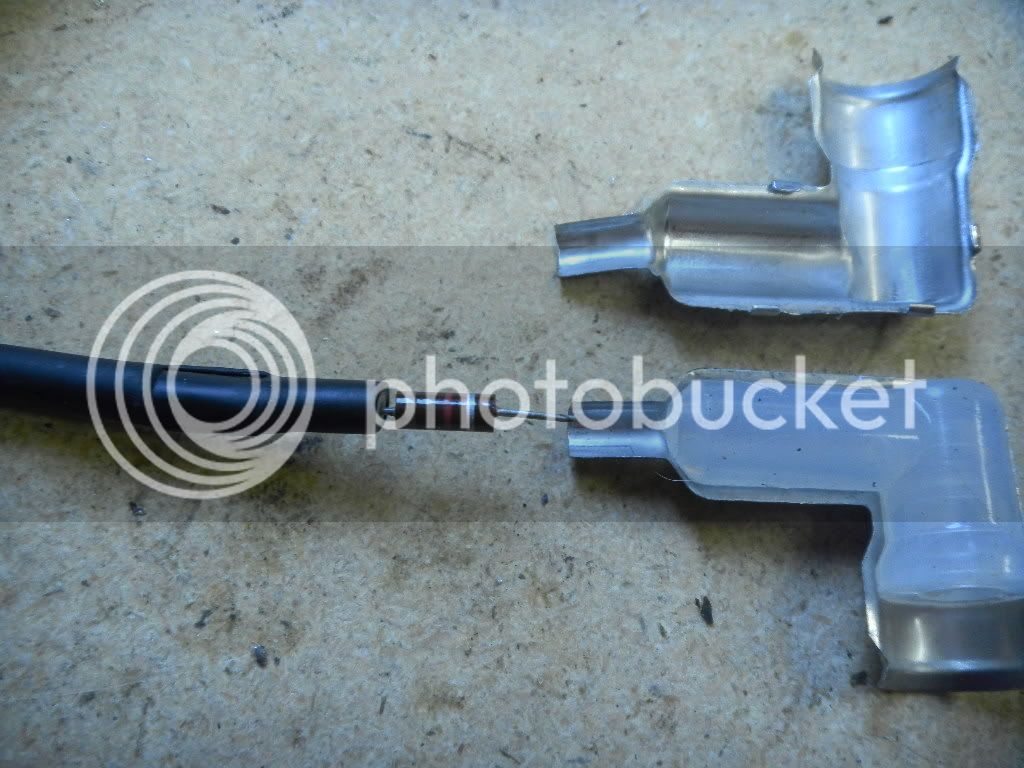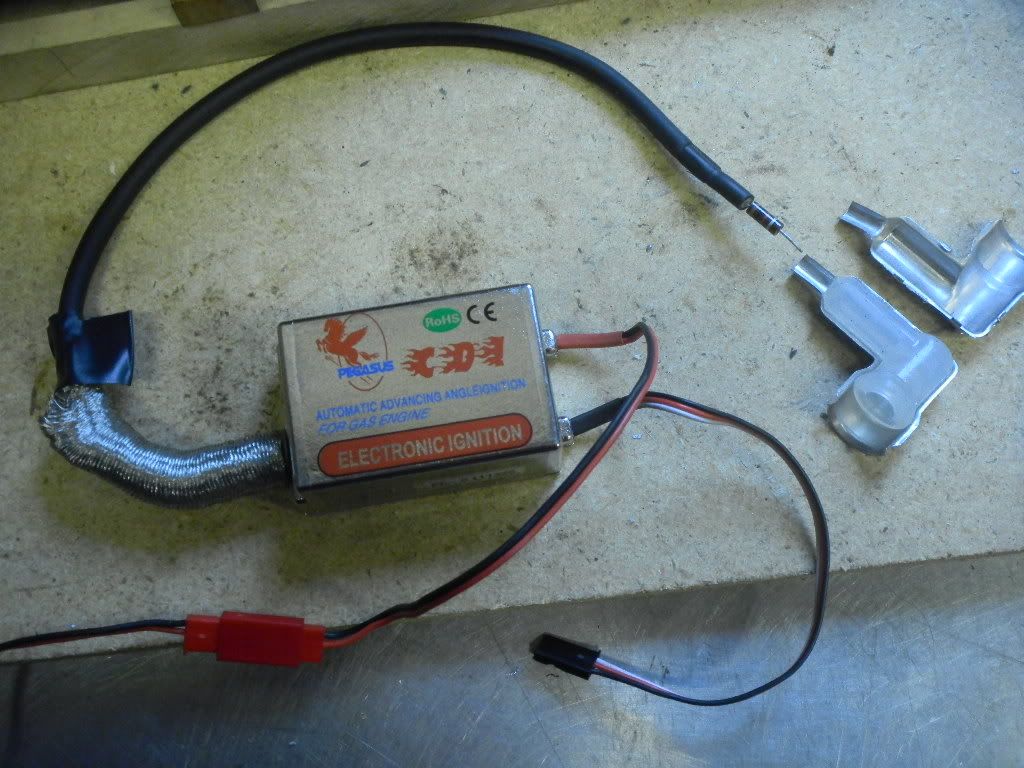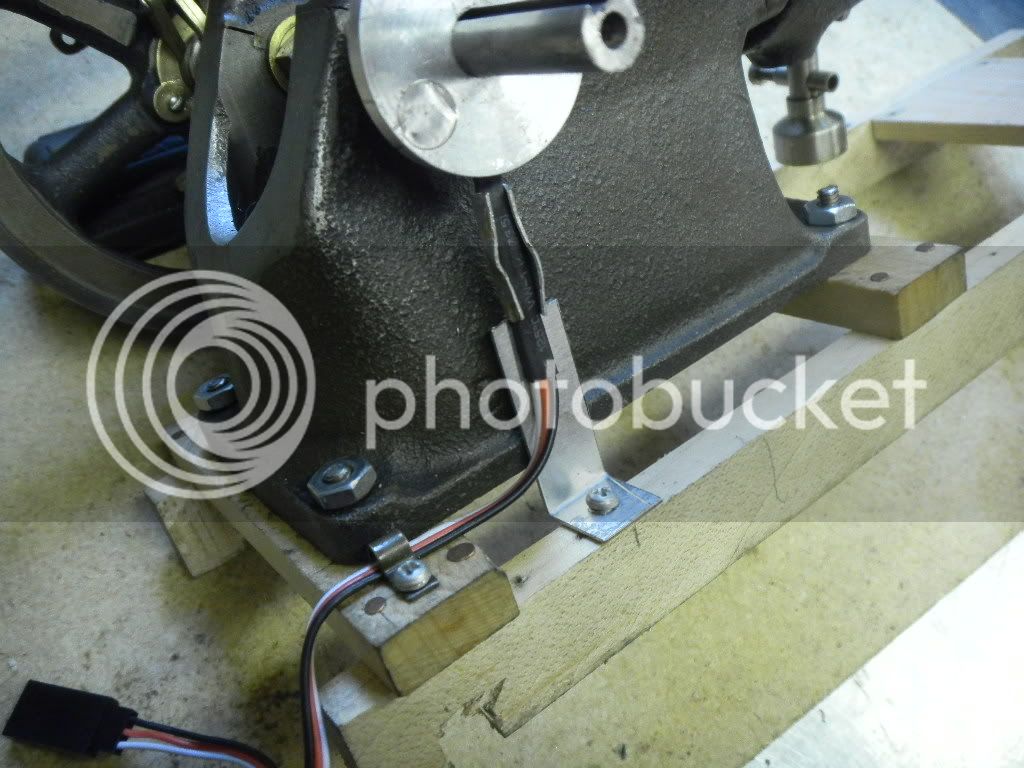Generatorgus
Senior Member
- Joined
- Feb 25, 2010
- Messages
- 362
- Reaction score
- 166
OK, now I've got one, and a few questions.
This ignition was is obviously intended for RC models as the spark plug output is entirely shielded. As the spark plug fitting is not suited for the tiny plug on my Little Brother, I have to adapt. After I pealed back the cable shielding and removed the metal spark plug cover I found what I think is a resistor between the wire and the spring which clips to the plug tower. As this seems to be a substitute for a resistor type spark plug, do I need to include it in the circuit, or can I just toss it as I have no other use for it?


I rigged this temporary set up on the Brother, the timing will be adjusted by turning the alum. disc, rather than moving the sensor. Can I static test the hall sensor to set the timing or does it have to be hooked to the electronic module? Also the magnet in the disc is 5/16 dia., should I use something smaller?
GUS

This ignition was is obviously intended for RC models as the spark plug output is entirely shielded. As the spark plug fitting is not suited for the tiny plug on my Little Brother, I have to adapt. After I pealed back the cable shielding and removed the metal spark plug cover I found what I think is a resistor between the wire and the spring which clips to the plug tower. As this seems to be a substitute for a resistor type spark plug, do I need to include it in the circuit, or can I just toss it as I have no other use for it?


I rigged this temporary set up on the Brother, the timing will be adjusted by turning the alum. disc, rather than moving the sensor. Can I static test the hall sensor to set the timing or does it have to be hooked to the electronic module? Also the magnet in the disc is 5/16 dia., should I use something smaller?
GUS





